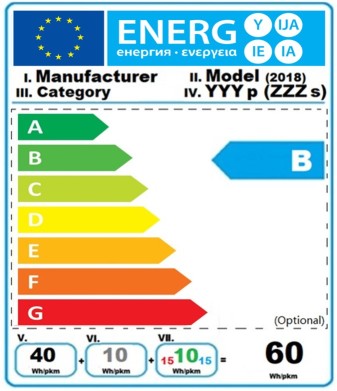Future Improvement for Noise and Energy (FINE-1 and FINE-2) (RV34)
Project Coordinator - Bombardier Transportation GmbH/Thales
Project Leader at KTH - Mats Berg
Scientists at KTH - Zhendong Liu, Peter Göransson, Romain Rumpler, Siddharth Venkataraman
Other Scientists - From 9/14 European Partners
Sources of Funding - Trafikverket and European Commission (Horizon 2020)
The Shift2Rail research programme is monitoring the impact of its research and demonstration activities, in particular by means of three high-level Key Performance Indicators: Capacity, Life Cycle Cost and Reliability. One indicator at a lower level, but still important, is the energy usage at train operation. To coordinate the energy efforts a so-called Cross Cutting Activity is launched through the projects FINE-1 and FINE-2. These projects also include studies on noise from trains.
A first step was to define an energy baseline for the four main service categories of Shift2Rail: High-speed, regional and urban passenger trains as well as freight trains. State-of-the-art technology with respect to energy performance was surveyed and representative train configurations and operational conditions were defined. A software for train energy simulation was developed through the Shift2Rail open-call project OPEUS. The improvements in energy performance in Shift2Rail are being evaluated with this software. Reductions in energy usage at train operation are foreseen by improved traction and braking technologies, reduced running resistance, eco-driving, more efficient energy supply etc.
An important aspect is also energy labelling, that is how train energy performance can be quantified in a simple way so that different trains can be compared with each other and also how trains can be compared with other modes of transport from an energy perspective. In the European Union there are many products that have standardized ways of labelling their energy performance. So far the labelling mainly applies to household products, but efforts are now ongoing to also include other sectors like transport. For transport the units might be Wh per person-km or net-tonne-km. The labelling may also include corresponding CO2 emissions.
KTH has completed a literature study on energy labelling into a FINE-1 technical report. KTH has also, after extensive interaction with the project partners, proposed an energy label for trains referring to different train categories and operational conditions found in EN 50591. This kind of label should be useful to train manufacturers, operators and passengers etc as well as infrastructure managers and other authorities. The KTH contributions have been consolidated into a journal paper.
In FINE-2 the KTH work on energy labelling is continuing including further stakeholder analysis by means of a questionnaire as well as refinements on the labelling proposal. KTH will also continue working on modelling and simulation of sound radiation from trains for defined cases.

Z. Liu, M. Berg and T. Bustad. Review of energy labelling systems, Technical Report, FINE-T2.1-T-KTH-028-03, Dec 2018.
Z. Liu, M. Berg and T. Bustad. Energy labelling proposal, Chapter 2, Deliverable D2.1, FINE-T2.1-D-BTD-021-09, Sept 2019.
Z. Liu, M. Berg and T. Bustad: Review of existing energy labelling systems and a proposal for rail vehicles, Journal of Rail and Rapid Transit, online June 2020.
